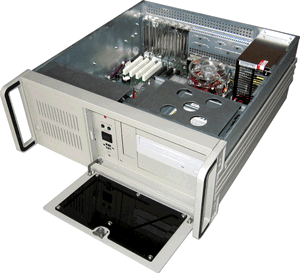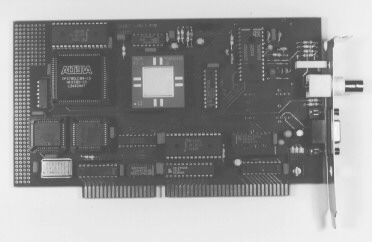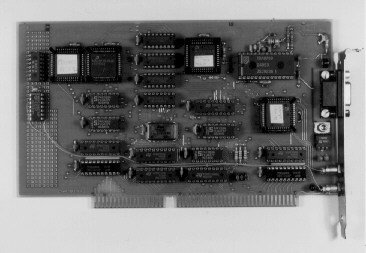
ND&M Realtime Centroiding Processor (RCP)
ND&M Accumulating Frame Grabber (AFG)

The ND&M Detector PC provides a complete solution for digital readout of the neutron positions and control of data acquisition over Ethernet. The ND&M detector PC includes a Realtime Centroiding Processor which is connected to a ND&M readout unit. The detector PC can be used to run the ND&M detector software or to run a server program which can be accessed over Ethernet using TCP/IP protocol. A client dll can be provided which can be integrated into the control software of your experiment. This dll is responsible for communicating with the server running on the ND&M detector PC and provides an easy to implement interface to control the detector and to receive data from the detector.

The ND&M Real-time Centroiding Processor is an ISA-compatible slot card for use in PC-compatible computers. After inserting an ND&M Handmonitor into the Readout Unit and connecting the video cable to it, the Real-time Centroiding Processor analyzes each video frame from the CCD camera inside of the Readout Unit.
Each frame is searched for
scintillation
events in real-time and their positions are stored on disk. Due to the
simpler centroid searching algorithm, the resolution is lower than the
resolution of the Accumulating Framegrabber (65 µm in horizontal
direction, 100 µm in vertical direction), but the maximum count
rate
is approximately a factor of hundred higher. The necessary computing
power
is provided by a high performance digital signal processing circuit.
The
Real-time Centroiding Processor is delivered with a software package
for
taking exposures of a predetermined time, visualizing and storing
different
data sets, setting discriminator levels and much more.


The ND&M Accumulating Framegrabber is an ISA-compatible slot card for use in PC-compatible computers. After inserting an ND&M Handmonitor into the Readout Unit and connecting the video cable to it, the Accumulating Framegrabber adds up the video frames from the CCD camera inside of the Readout Unit. After a predefined exposure time, the software included with each card searches for the center of gravity of each neutron scintillation event and stores it on disk.
Due to this method and the time consuming computations that are necessary for it, the maximum count rate is limited to some hundred neutrons per second on the detector area. The method is extremely insensitive to background radiation and noises. The resolution which is achieved in this way is less than 40 µm (FWHM of the line spread function)! At low count rates, it is also possible to achieve a high time resolution with the addition of photodiode and a semitransparent mirror in the readout unit (see Ref. 4).
The Accumulating Framegrabber can also
be used in integrating mode, i.e. without centroid finding, but without
any practical limitations on the maximum flux, at the expense of a
lower
resolution of approx. 200 µm.
